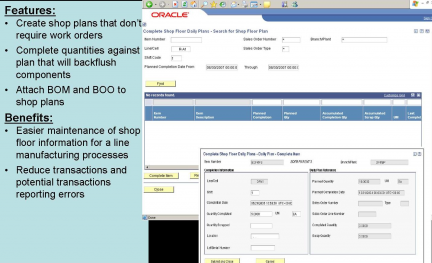
- Jd edwards enterprise system how to#
- Jd edwards enterprise system update#
- Jd edwards enterprise system code#
Use the R9 RMA type to create a credit for the item. You will receive the item from the customer and then ship a new item. Use the R8 RMA type to create a sales order and a purchase order.
Jd edwards enterprise system code#
The disposition code and RMA status on the detail line of the RMA determines which documents the system creates. Use the R6 RMA type to create a credit order and a purchase order, or a sales order and a purchase order.

Jd edwards enterprise system how to#
The RMA type is a document type that the system uses to characterize how to use the RMA. You define the RMA defaults based on the RMA type. If necessary, you can also enter a service order for repair of the returned item, or a work order for a piece of equipment. When you receive a returned item, you can take advantage of the JD Edwards EnterpriseOne Procurement system processes such as receipt routings, warehouse puts, and quality inspections. Bill for non-returned goods using the JD Edwards EnterpriseOne Sales Order Management system.Track expected returns in the JD Edwards EnterpriseOne Procurement system.This flowchart illustrates the integration of RMAs with other JD Edwards EnterpriseOne systems, such as: You use an RMA to track inventory.Ī credit order provides the accounting department a method to issue a credit to the customer, regardless of whether parts are returned. After the consumer receives the new printer, they are instructed to package the old printer in the packing box, affix a label, and return the item.Īn RMA provides approval to return inventory for credit, repair, or replacement. You call an 800 number and if the customer service representative cannot fix the problem over the phone, then the company sends a new printer. The program updates the status codes on the sales orders so that they can continue through the sales order process.Ĭomputer printers are often advanced replacement items. Run the R400502 program for advanced exchanges. If the item has been received, the system updates the purchase order and changes the sales order to another status. If the date has passed and the item was returned, then the system updates the sales order status. The system calculates the promised delivery date from the Received Lead Time field in the Return Material Authorization Defaults program (P40052).

If the defective item is received by the promised date, the R400502 program updates the status of the related sales order detail line to 999 (complete – ready to purge).Īdditionally, the R400502 program changes the price to zero for the replacement item and does not print a sales invoice.
Jd edwards enterprise system update#
If the defective item is not received by the promised delivery date, the RMA – Update Sales Order Status program (R400502) updates the status of the related sales order detail line to a user defined status, such as 580 (print invoice) and the customer is charged for the replacement item. You create a sales order to ship an item and a purchase order to receive a defective, yet similar item. The customer returns the damaged item and the supplier receives the item on the RMA purchase order.Īn advanced replacement or exchange occurs when the customer receives a replacement product before returning the defective or damaged product to the supplier. The replacement item is shipped to the customer and the sales order continues through the process based on the order activity rules for the document type and line type combination. The disposition determines if the customer returns the item or scraps it at the customer location. When the supplier creates the RMA, they can disposition the items. Or, the system can create a purchase order to receive the damaged item and a sales order to ship a replacement. When the supplier creates an RMA, the system can create a credit order for the amount of the item. The customer initiates the process by notifying the supplier of a damaged item. This flowchart illustrates the basic RMA process between customers and suppliers. In this topic, you will learn the RMA process and the steps to set up RMAs.



 0 kommentar(er)
0 kommentar(er)
